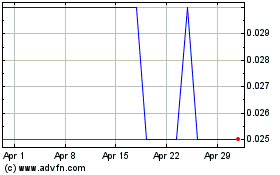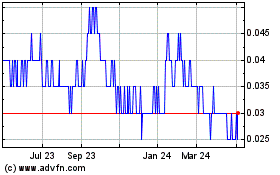AZINCOURT ENERGY CORP. (“Azincourt” or the
“Company”)
(TSX.V: AAZ, OTCQB: AZURF), is pleased
to announce that the Winter 2022 exploration program at the East
Preston uranium project, located in the western Athabasca Basin,
Saskatchewan, Canada, has been completed.
Drilling for the 2022 winter season at the East
Preston Project commenced on January 24th. Despite a stretch of
extreme cold weather and related logistics and mechanical
challenges, and the subsequent rapid onset of warm weather, a total
5,004.5 meters was completed in 19 drill holes over eight weeks
duration. Drilling was focused on the G-, K-, and H-Zones with
prior progress reported in news releases dated February 14th, 2022,
March 1st, 2022, and March 16th, 2022. Packing up and demobilizing
of the drill equipment and camp is underway with decommissioning of
the road expected to be completed in early April.
A total of 420 samples were collected throughout
the program and sent to the Geoanalytical Laboratory at the
Saskatchewan Research Council in Saskatoon, Saskatchewan for
analysis. Complete assay results, expected to be received beginning
in late April and into June, will be reported once received,
reviewed, and verified by the Company’s QP.
With the discovery of at least 1,700 meters of
extensive hydrothermal alteration and elevated radioactivity, the
Company considers the results of this program to be highly
significant. Major uranium discoveries in the Athabasca Basin such
as McArthur River, Key Lake, and Millennium were primarily made by
drill testing strong alteration zones related to conductor
features. Establishing the presence of strong alteration zones at
East Preston is a significant step forward in identifying the key
areas along the conductor trends where more attention is required.
Many holes were drilled significantly deeper than initially planned
to get through alteration and structure intersected, and additional
holes were drilled to follow up key results.
“The discovery of these alteration zones, both
along the same trend, covering almost two kilometers of ground
within these two separate zones, is a very important development,”
said President and CEO, Alex Klenman. “With 5,000 meters of
drilling we were able to establish 1,700 meters of alteration,
that’s a pretty good ratio. We know that alteration is associated
with uranium deposition, acting as a halo proximal to deposition.
The area in and around these zones is now a clear priority for
continued drilling. The assay results will give us a really good
idea of what we’re into and we’re eager to see what comes back from
the lab,” continued Mr. Klenman.
“The results from the winter drilling program
are very encouraging,” said VP, Exploration, Trevor Perkins. “The
extensive alteration zones and elevated radioactivity are
significant signs that we are on the right track. Alteration and
structure continue to be the key features to guide us towards
discovery. These results continue to help us vector within these
alteration zones,” continued Mr. Perkins.
The winter 2022 diamond drilling program was
executed by Terralogic Exploration Inc. under the guidance and
supervision of Azincourt’s Vice President, Exploration, Trevor
Perkins, P.Geo, and Jarrod Brown, M.Sc., P.Geo, Chief Geologist and
Project Manager with TerraLogic Exploration. Increased costs
associated with the weather and changes to the program due to the
promising results resulted in the Joint Venture partners increasing
the program budget to facilitate getting as much information as
possible this field season. Drilling focused on the A-G and K-H-Q
trends and commenced in the G-Zone where the 2021 drill program
ended (Figure 2).
Nine drill holes were completed on the northeast
trending G-Zone (Figure 2). Extensive hydrothermal alteration and
evidence of east-west cross-cutting structures have been
intersected along the southern portion of the zone, highlighted in
holes EP0030 and EP0037 with intervals of hydrothermal hematite
alteration and extensive evidence for a steep east-west fault
cross-cutting the main northeast trending structure and graphitic
lithologies. An evaluation of the structural data and geochemistry
will be undertaken to aid in planning for additional follow-up
drilling and evaluation of this area in the next drill program.
On the north-south trending K-Zone (Figure 2),
six holes were completed, while one hole was lost in a sand filled
fault zone at the north end of the zone. Drilling on the K-Zone
also intersected extensive hydrothermal hematite alteration,
indicating this alteration zone is at least 1200 meters long.
Extensive zones of hydrothermal hematite were intersected in all
holes, with clay alteration also being present. A zone of localized
elevated radioactivity more than 10 times background values was
identified in EP0035 from both handheld scintillometers and a
downhole gamma probe (Azincourt Energy news release dated March
1st, 2022). Samples from this zone have been sent to the lab to
evaluate the significance of the elevated radioactivity in this
area.
The H-Zone covers a change in orientation of the
structural and conductive trend from north south to southwest
trending (Figure 2). Three holes were completed on the north part
of the trend and have intersected a thick zone of hydrothermal
alteration and an intense graphitic fault zone. The structural
setting for this area is expected to be complex, to facilitate the
change in orientation of the conductive package. Whether this
alteration zone is a continuation of that in K-Zone or constitutes
a new alteration zone is yet to be determined.
Due to the changes to the drilling program, only
the north end of the H-Zone was tested and the planned holes for
Q-Zone have been postponed to the winter of 2022-2023.
A thorough review and interpretation of the
results of this program will occur over the next few months and
preparation for an extensive program in the winter of 2022-2023 is
underway to continue evaluating alteration and structure on the G-,
K-, and H-Zones as well as to beginning testing at the Q-Zone.
East Preston Target Areas
The primary target area on the East Preston
Project is the conductive corridors from the A-Zone through to the
G-Zone (A-G Trend) and the K-Zone through to the H and Q-Zones
(K-H-Q Trend) (Figures 1 and 3). The selection of these trends is
based on a compilation of results from the 2018 through 2020
ground-based EM and gravity surveys, property wide VTEM and
magnetic surveys, and the 2019 through 2022 drill programs, the
2020 HLEM survey indicates multiple prospective conductors and
structural complexity along these corridors.
Drilling programs to date have confirmed that
identified geophysical conductors comprise structurally disrupted
zones that are host to accumulations of graphite, sulphides, and
carbonates. Hydrothermal alteration and anomalous radioactivity
have been demonstrated to exist within these structurally disrupted
conductor zones.
While the A-G and K-H-Q trends are the primary
focus, many additional trends and zones exist to the east and west
of the primary trends on the East Preston property (Figure 1).
These additional target areas will require ground geophysics to
constrain conductor locations and drilling to properly evaluate
their potential.
Permitting and Community
Engagement
Azincourt Energy continues to be engaged in
regular meetings with the Clearwater River Dene Nation and other
rights holders to ensure that concerns of the local communities are
addressed. Azincourt looks forward to a continued close working
relationship with CRDN and other rights holders to ensure that any
potential impacts and concerns are addressed and that the
communities can benefit from activities in the area through support
of local business, employment opportunities, and sponsorship of
select community programs and initiatives. Several members of the
Clearwater River Dene Nation were directly employed on site or to
provide support and services to keep the camp and program
running.
Figure 1: Target corridors at the East Preston
Uranium Project, Western Athabasca Basin
Saskatchewanhttps://www.globenewswire.com/NewsRoom/AttachmentNg/b5a9eb73-cd37-4f1a-981b-264a065cae83
Figure 2: 2022 Drill Holes and Target areas at
the East Preston Uranium
Projecthttps://www.globenewswire.com/NewsRoom/AttachmentNg/0c008a8f-6a51-42b9-b8ce-cfe2a2dd59af
Figure 3: Project Location – Western Athabasca
Basin, Saskatchewan,
Canadahttps://www.globenewswire.com/NewsRoom/AttachmentNg/64e0418b-a4db-4e2d-807b-8310cf52d3ae
About East Preston
Azincourt controls a majority 72.8% interest in
the 25,000+ hectare East Preston project as part of a joint venture
agreement with Skyharbour Resources (TSX.V: SYH), and Dixie Gold.
Three prospective conductive, low magnetic signature corridors have
been discovered on the property. The three distinct corridors have
a total strike length of over 25 km, each with multiple EM
conductor trends identified. Ground prospecting and sampling work
completed to date has identified outcrop, soil, biogeochemical and
radon anomalies, which are key pathfinder elements for unconformity
uranium deposit discovery.
The East Preston Project has multiple long
linear conductors with flexural changes in orientation and offset
breaks in the vicinity of interpreted fault lineaments – classic
targets for basement-hosted unconformity uranium deposits. These
are not just simple basement conductors; they are clearly
upgraded/enhanced prospectivity targets because of the structural
complexity.
The targets are basement-hosted unconformity
related uranium deposits similar to NexGen’s Arrow deposit and
Cameco’s Eagle Point mine. East Preston is near the southern edge
of the western Athabasca Basin, where targets are in a near surface
environment without Athabasca sandstone cover – therefore they are
relatively shallow targets but can have great depth extent when
discovered. The project ground is located along a parallel
conductive trend between the PLS-Arrow trend and Cameco’s
Centennial deposit (Virgin River-Dufferin Lake trend).
Qualified Person
The technical information in this news release
has been prepared in accordance with the Canadian regulatory
requirements set out in National Instrument 43-101 and reviewed on
behalf of the company by C. Trevor Perkins, P.Geo., Vice President,
Exploration of Azincourt Energy, and a Qualified Person as defined
by National Instrument 43-101.
About Azincourt Energy
Corp.
Azincourt Energy is a Canadian-based resource
company specializing in the strategic acquisition, exploration, and
development of alternative energy/fuel projects, including uranium,
lithium, and other critical clean energy elements. The Company is
currently active at its majority-owned joint venture East Preston
uranium project, and it’s recently acquired Hatchet Lake uranium
project, both located on the edges of the Athabasca Basin,
Saskatchewan, Canada, and the Escalera Group uranium-lithium
project, located on the Picotani Plateau in southeastern Peru.
ON BEHALF OF THE BOARD OF AZINCOURT
ENERGY CORP.
“Alex Klenman”Alex Klenman, President
& CEO
Neither the TSX Venture Exchange nor its
regulation services provider (as that term is defined in the
policies of the TSX Venture Exchange) accepts responsibility for
the adequacy or accuracy of this release.
This press release includes “forward-looking
statements”, including forecasts, estimates, expectations and
objectives for future operations that are subject to a number of
assumptions, risks and uncertainties, many of which are beyond the
control of Azincourt. Investors are cautioned that any such
statements are not guarantees of future performance and that actual
results or developments may differ materially from those projected
in the forward-looking statements. Such forward-looking information
represents management’s best judgment based on information
currently available. No forward-looking statement can be
guaranteed, and actual future results may vary materially.
For further information please
contact:
Alex Klenman, President & CEOTel:
604-638-8063info@azincourtenergy.com
Azincourt Energy Corp.1430 – 800 West Pender
StreetVancouver, BC V6C
2V6www.azincourtenergy.com
Azincourt Energy (TSXV:AAZ)
Historical Stock Chart
From Oct 2024 to Nov 2024

Azincourt Energy (TSXV:AAZ)
Historical Stock Chart
From Nov 2023 to Nov 2024
